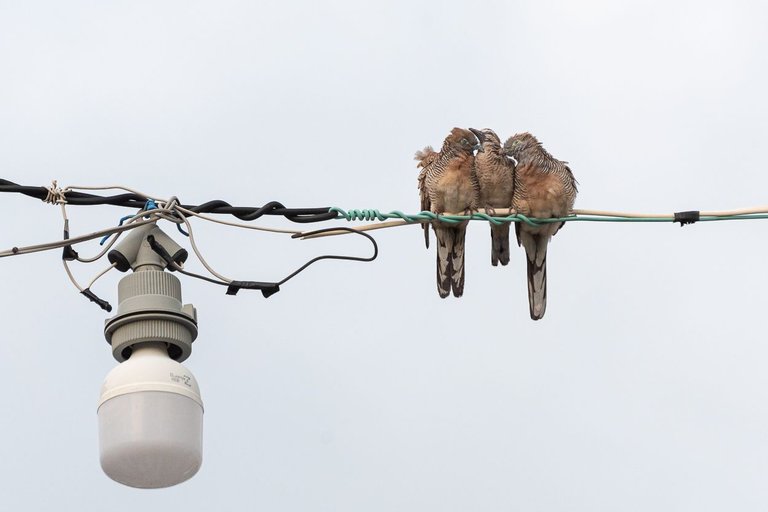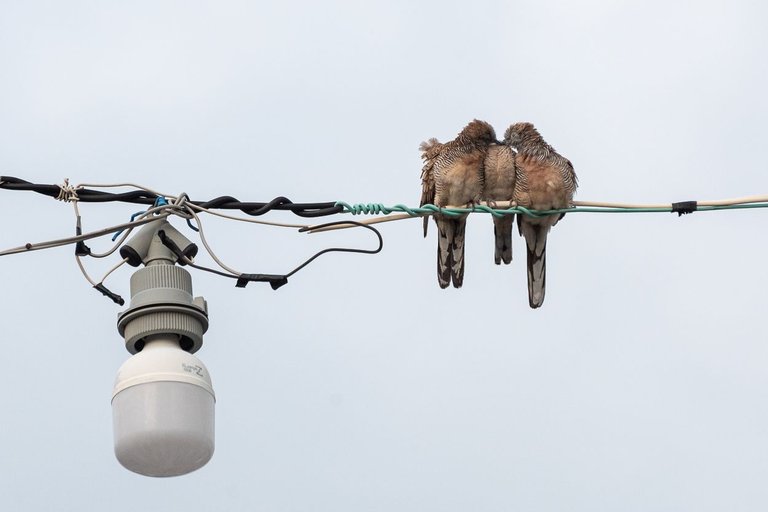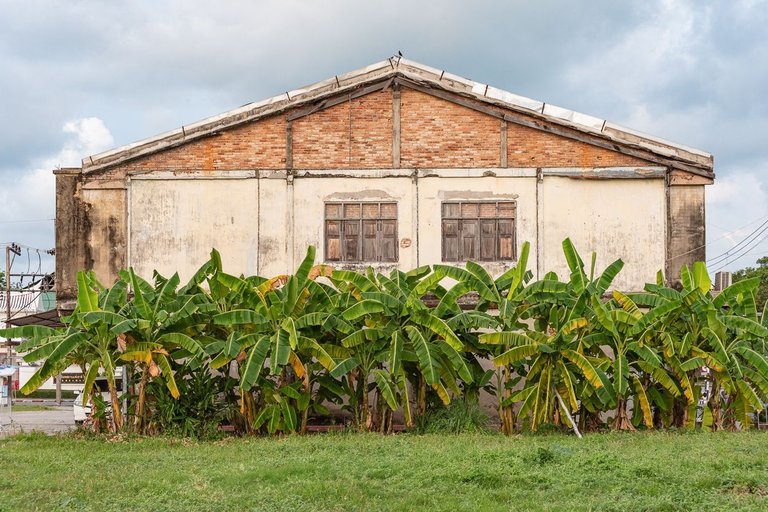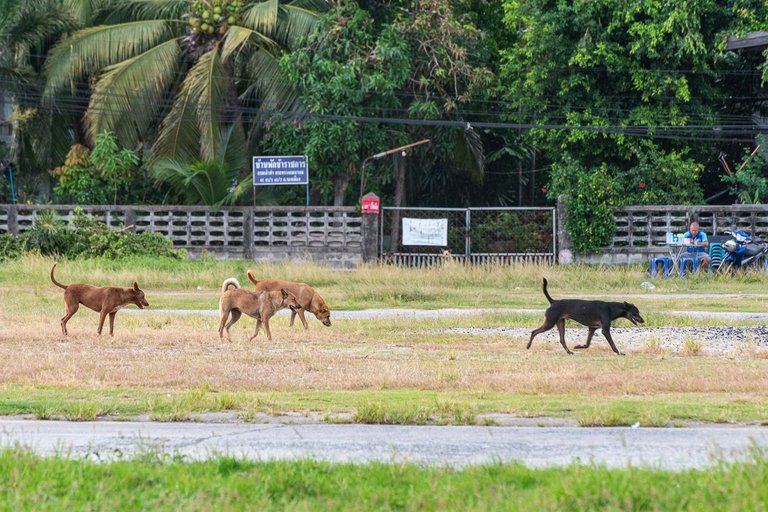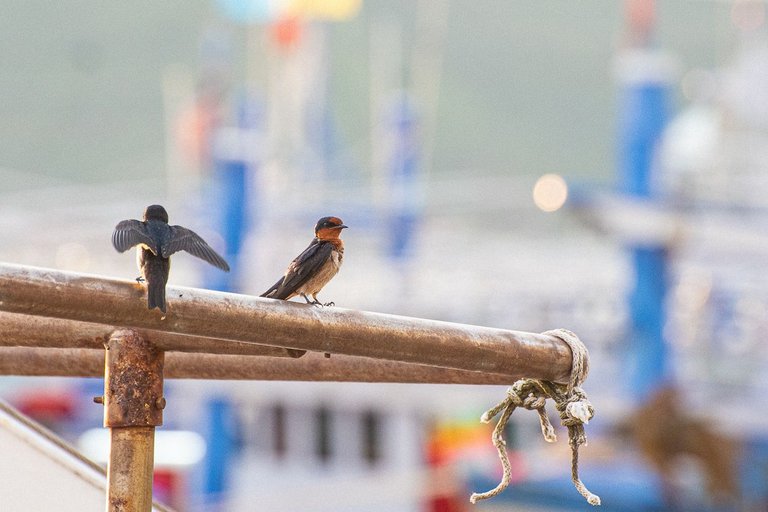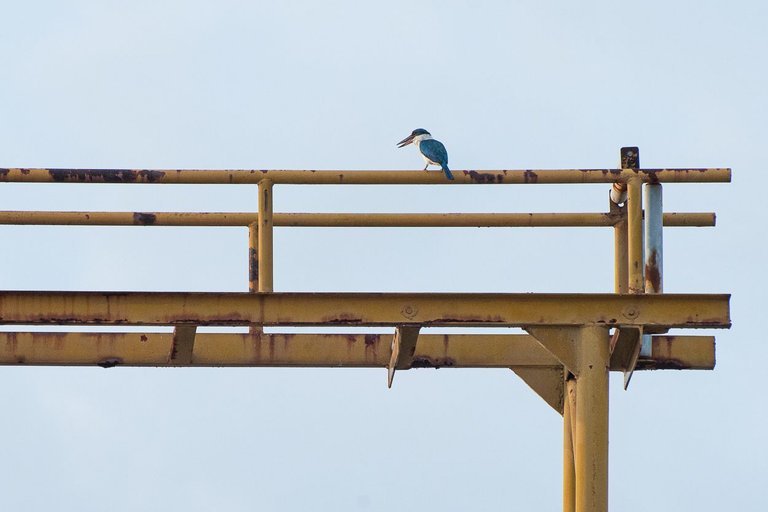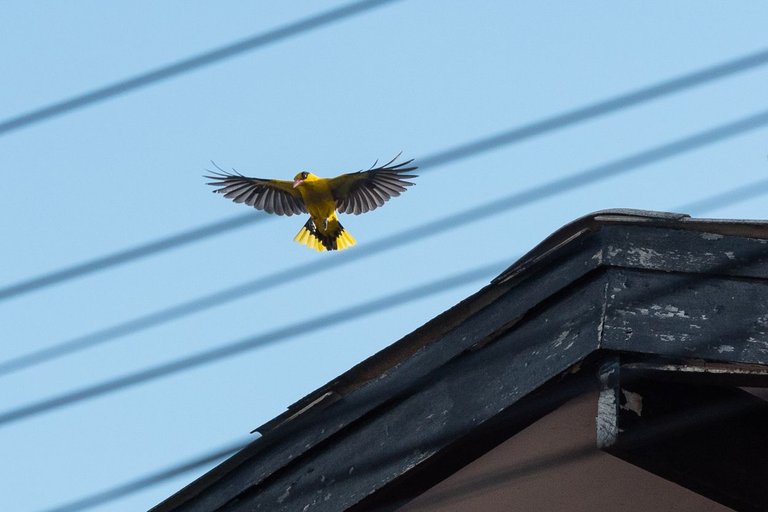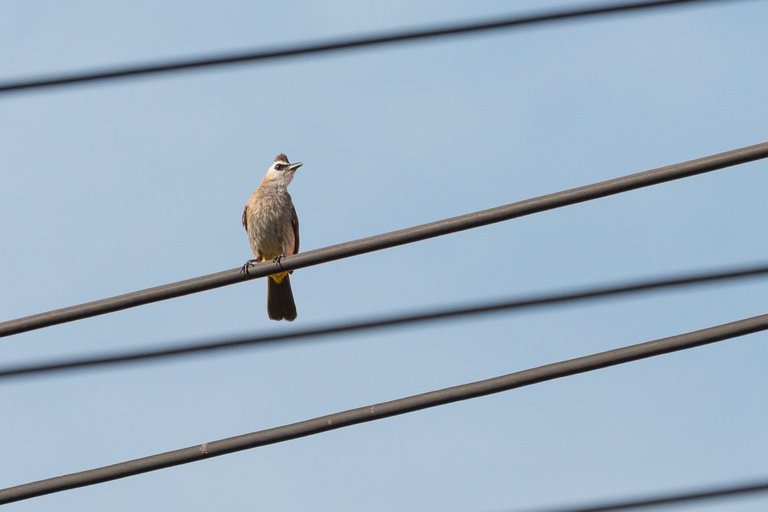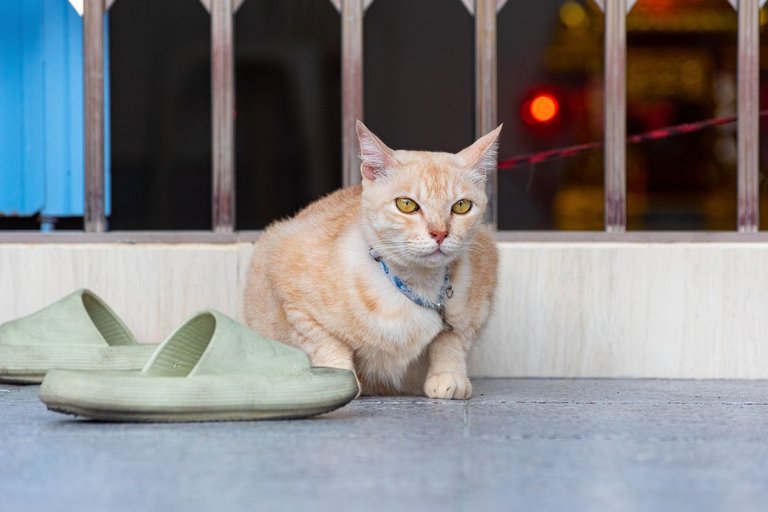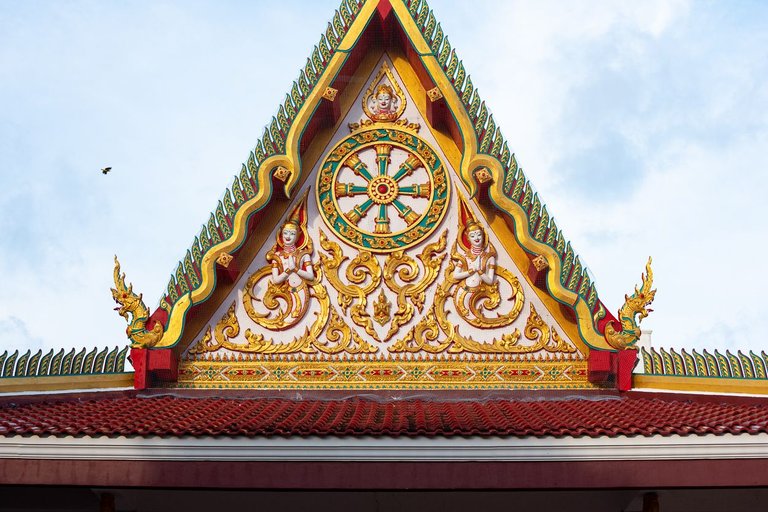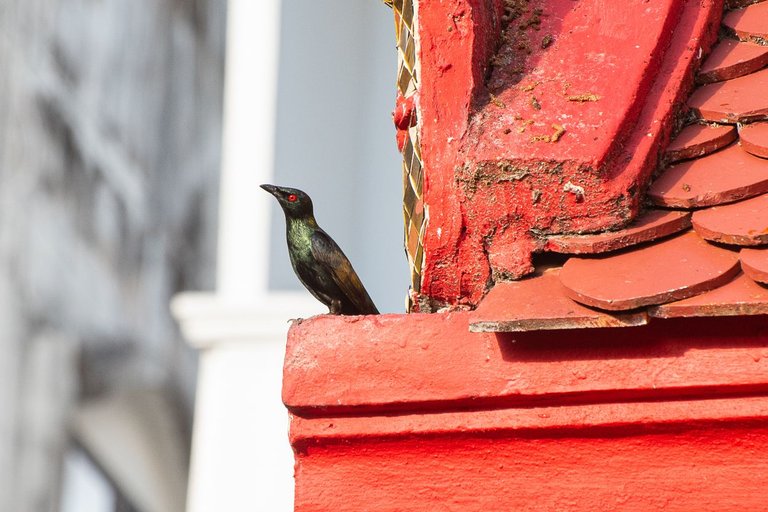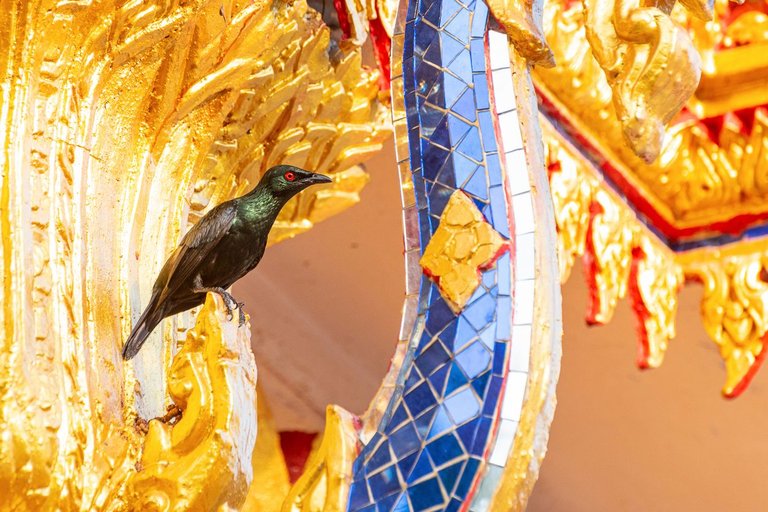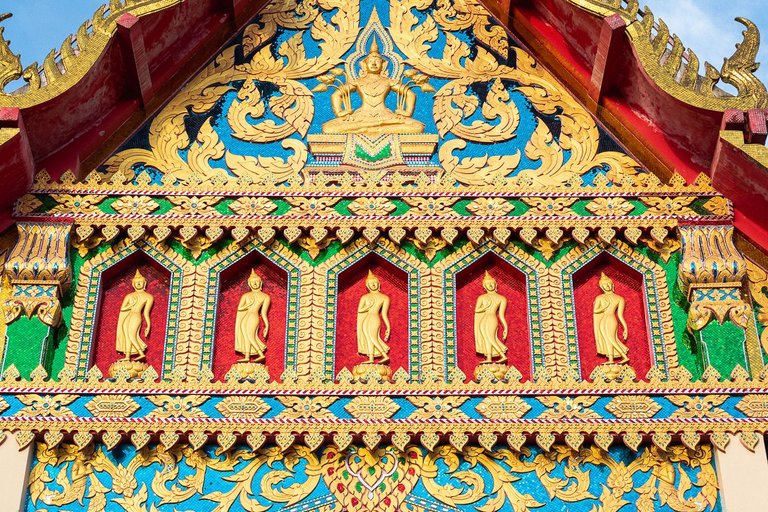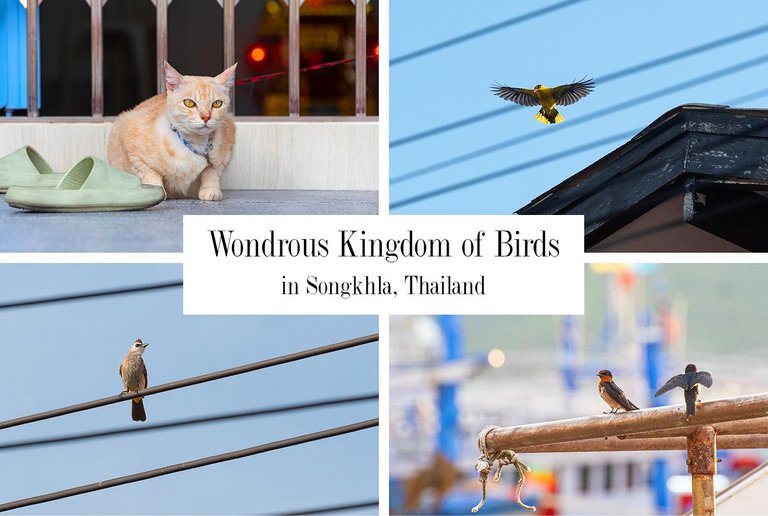
On May 1, I went out with a 70-300 lens in the late afternoon to walk around my guesthouse; I was meandering along residential alleys, visited a lake pier, and a nearby Buddhist temple. The walk turned out quite fruitful from the point of birding. Sharing.
Zebra doves (Geopelia striata) are common city 'underfoot' birds, always eating, always bending their heads toward the asphalt in search of something edible. Sad slaves of the seeds, I call them — I mean, just look at sparrows: curious, cheerful, full of personality. Doves, by contrast, resemble little harvesting machines.
However, the following scene changed my attitude toward these birds.
I spotted three of them right after sunset, sitting on a wire over the street - two adults and a juvenile squeezed between them, as if the parents were afraid their child might fall.
Zebra doves are smooth and neat but, here, you see them shaggy - feathers gone wild 'cause of love... Both parents were constantly cleaning the kid with much affection. They were showing love in so human way. ❤️
For Show Me a Photo Contest 217 themed "headless" chicken
When I returned to the room, I read that the doves are like that indeed: both parents hatch and care about their offspring.
That's also a picture of a bird - the great myna (Acridotheres grandis) sitting on the roof ridge. They have this habit like if they guard the area.
This building is 20 meters from the lake port of Songkhla, where I was heading to check if some birds were enjoying the last rays of the sun hiding behind the mountain.
Dogs. A sort of stray but probably fed by port people. (At night, when I am going to a store, their barking can be disturbing...)
And these are the guys I found at the pier:
Barn swallows (Hirundo rustica). Very common in Songkhla (in March-May at least). Usual but fun, love them. I noticed one beautiful habit of theirs: when it starts raining, unlike other birds, they don't hide and continue to sit on the wires, and it seems even with pleasure. Adorable little guys.
A new species in my personal species list of Songkhla birds:
The collared kingfisher (Todiramphus chloris). Always a pleasure to spot this type of bird.
Do you know these fishermenbirds live not in nests on trees but in burrows? I mean... they have wings but their neighbors are mice and shrews, isn't that super weird?
Another thought: in Vietnam, there are A LOT of rats. I always wondered how poor urban kingfishers protect their burrows with eggs and chicks against these disgusting predators... 🥺
The answer (NOT MY VIDEO):
https://youtube.com/shorts/9aFnk2wJy8A?si=cc5EqcgA0owaWxqt
They catch a rodent and beat it against something solid until it is dead...
Magnificent!
Let's turn the page to enter the residential area of Songkhla. (How do you like the foundation date on the building?)
Yup, this:
A beautiful yellow bird called the black-naped oriole (Oriolus chinensis). Lucky me - orioles live just in the streets around my guesthouse.
The yellow-vented bulbul (Pycnonotus goiavier). Super common. But I love its punk haircut.
I always post a picture of a cat in my bird posts because the best use of birds, after all, is as food for cats.
Lol, kidding! 😁
Visiting a Buddhist temple, Wat Don Rak:
This spot in the sky is actually the black-naped oriole - the yellow bird I showed above.
Meet the "hellstarlings" - Asian glossy starlings (Aplonis panayensis) - I posted previously:
What is new - it's a different temple but the same decoration - enamel and gilding of the gates to the temple:
If you look closely, these birds have a metallic sheen themselves. Maybe they choose the golden gates of temples because they feel they belong there and have protective coloration in such environment.
Or perhaps, like magpies and other birds, they are simply attracted by shiny things, who knows...
I loved this walk. I showed it in reverse chronological order because the most interesting part was at the end. Thank you for reading!
All photos were taken with a Nikkor 70-300mm on a full-frame DSLR Nikon D750 by the author on May 1, 2025, in Songkhla, Thailand

